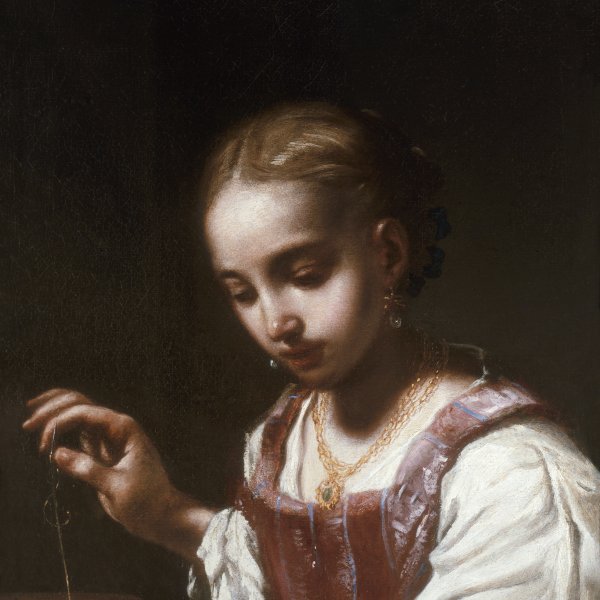Antonio Amorosi
Comunanza (Ascoli Piceno), 1660-1738
Amorosi trained in Rome in the studio of Giuseppe Ghezzi. While he produced portraits and religious works, he is best known for his genre paintings, which were influenced by a florid, late Baroque style and by the so-called bambochadas. His work reveals an interest in depicting everyday life and ordinary people, in particular the world of childhood, which he conveys in a tender, elegant and intimate manner. Amorosi’s work reveals the influence of Bernhard Keil, better known as Monsù Bernardo, particularly his portraits in half-length and occasionally full-length, and Amorosi’s work has at times been confused with Keil’s. As a result various authors have questioned the attribution of many of the artist’s paintings, considering them to be by Monsù Bernardo rather than by Amorosi.
Various sources indicate that Juan Francisco Pacheco Téllez, Duke of Uceda, was one of the first to commission genre scenes from the artist in the early years of the 18th century. Among Amorosi’s first attributed works are the Portrait of Filippo Ricci (private collection, USA), and the frescoes in the Palazzo Comunale in Civitavecchia. In collaboration with his teacher Pier Leone Ghezzi, Amorosi executed the Madonna of Loreto for the church of Santa Catalina in Comunanza. Later, in Rome, he worked in the churches of San Rocco and San Bernardino in Monti. Among his most typical and best works are Boy with a Glass and Boy with a Dog, both in the Pinacoteca Comunale in Deruta. Amorosi died in his native city in 1738.
Various sources indicate that Juan Francisco Pacheco Téllez, Duke of Uceda, was one of the first to commission genre scenes from the artist in the early years of the 18th century. Among Amorosi’s first attributed works are the Portrait of Filippo Ricci (private collection, USA), and the frescoes in the Palazzo Comunale in Civitavecchia. In collaboration with his teacher Pier Leone Ghezzi, Amorosi executed the Madonna of Loreto for the church of Santa Catalina in Comunanza. Later, in Rome, he worked in the churches of San Rocco and San Bernardino in Monti. Among his most typical and best works are Boy with a Glass and Boy with a Dog, both in the Pinacoteca Comunale in Deruta. Amorosi died in his native city in 1738.





